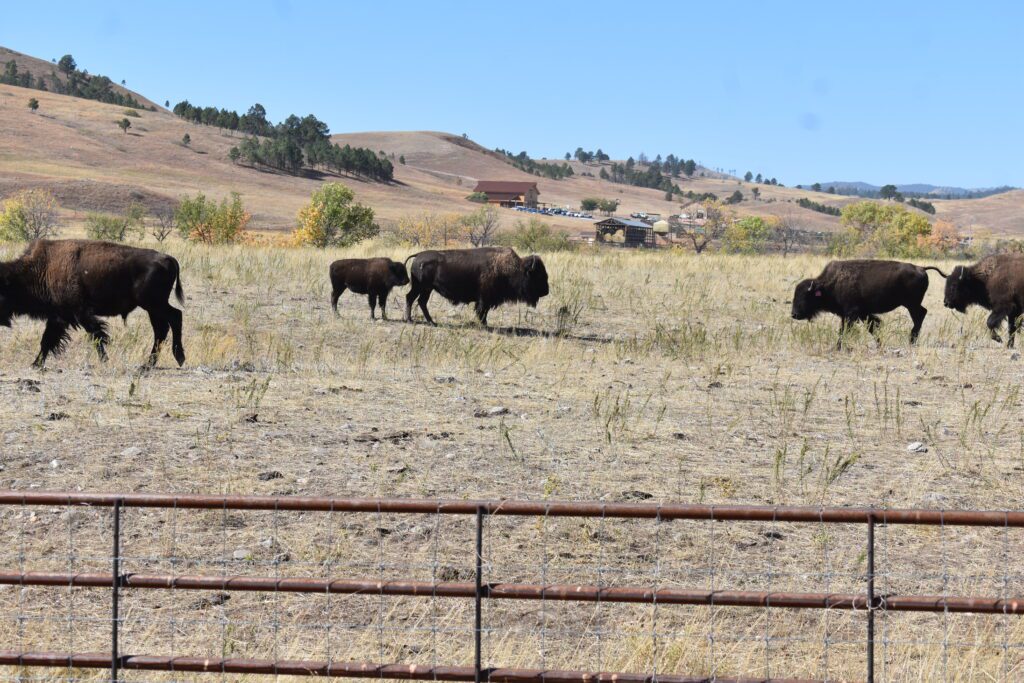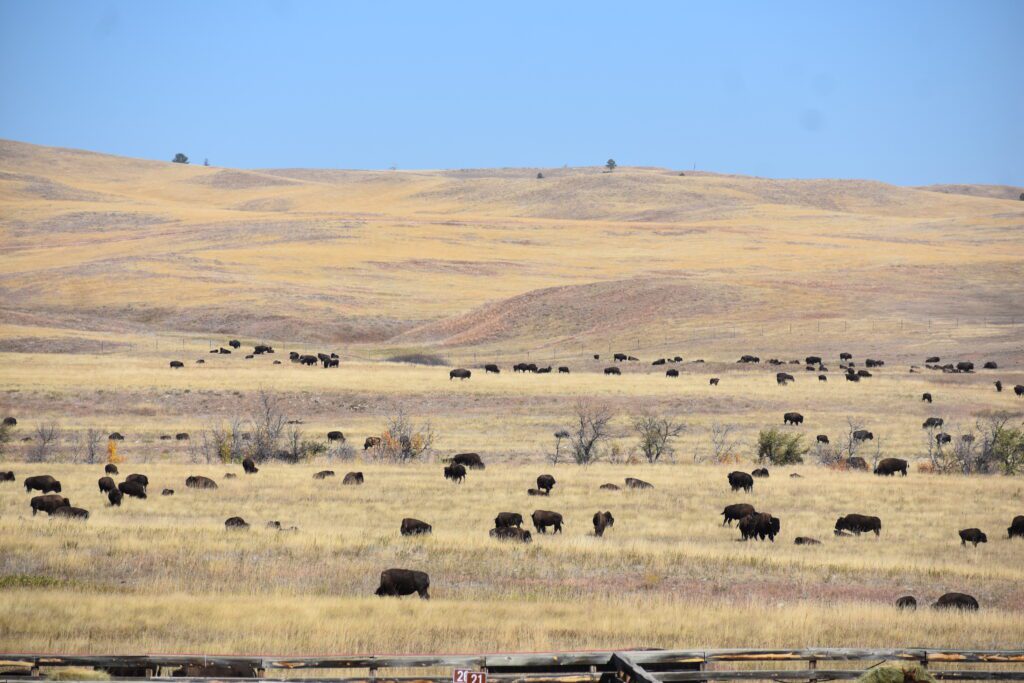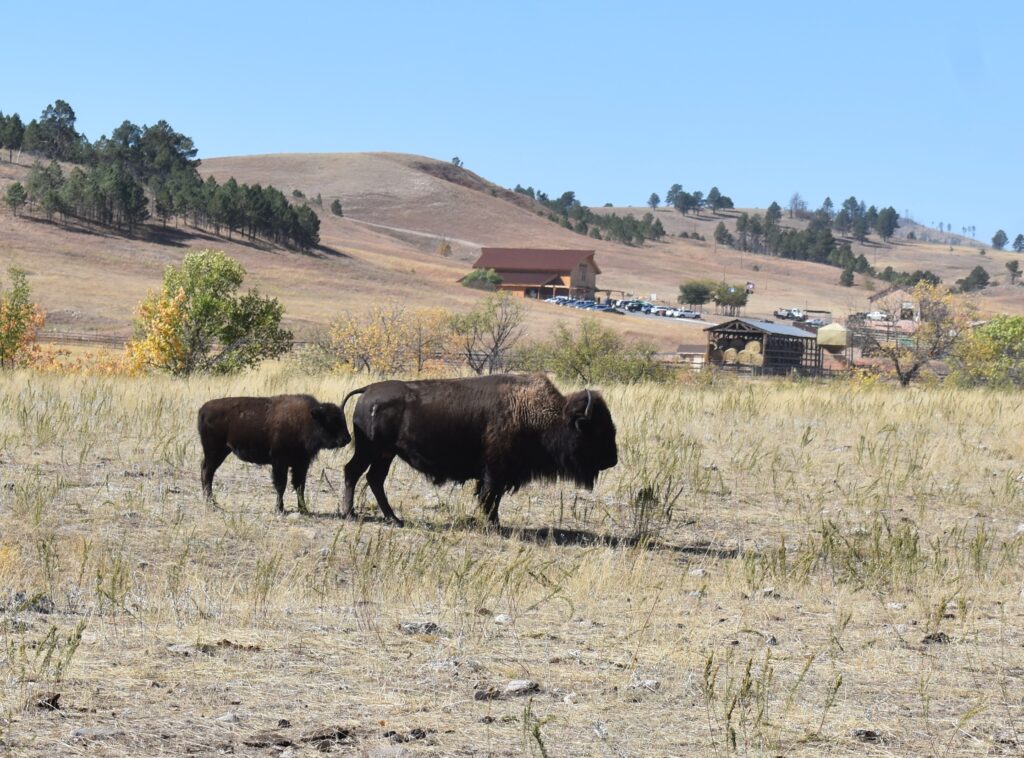News
History: “Buffalo” Jones, Saving the Buffalo
Published
2 months agoon
By
cvannoy
Today, visitors to Yellowstone National Park in Wyoming and Custer State Park in South Dakota can see herds of magnificent bison still roaming free on the grasslands. The bison is a symbol of the American West, and during the 18th century, there was an estimated population of 60 million bison. But by the end of the 19th century, due to market hunting, the buffalo were nearly extinct, with less than 1000 known animals. Thirty or so of these lived in Yellowstone.
Several far-seeing men began campaigns to save the remnants of the once-large herds that once roamed the prairies across North America, from complete extinction. One was rancher Charles Goodnight of Texas, and another was Taxidermist William Temple Hornaday. Then there was C.J. (Buffalo) Jones.

And this from the Cheyenne Daily Leader, December 11, 1889 – The Buffalo. The Shipment of Live-Stock Here this Morning. – “Buffalo Jones” is in Charge of the Rare Cargo. He Talks Interestingly About the Great Wild Beef. The Animals from Manitoba and for Salt Lake. – The Leader sent one of its reporters buffalo hunting last night. The young man had a series of interesting adventures on the remarkable chase but was able to furnish material for this story by wire at 8 o’clock this morning. It was learned at the office late yesterday afternoon that Buffalo Jones, a Kansas man who has built up a big and profitable trade in the rare wild cattle, was between Omaha and Cheyenne with thirty-six head of bison in two palace stock cars with special fixtures.
The Leader’s commissioner met the train at Kimhall, Neb., after a tiresome journey and a quite eventful wait at the crude town. Mr. Jones is hospitality itself and has a fondness for newspaper people. He very sensibly remarks that even the buffalo business must be advertised to be completely successful. He has been in this line exclusively for the past ten years and has made a fair sized stake. His home ranch is near Garden City, Kan., and from this point he has for many seasons supplied Buffalo Bill and menageries all over the world with the almost extinct monarchs of the plains. Occasionally he sells a young animal to be served at a notable feasting at a swell restaurant on a holiday. Buffalo steak, he says, is worth $1 a pound.
The thirty-six buffalo in this cargo are from Stoney mountain, Manitoba, where they were owned by a wealthy ranchman named Benson. The latter claims that he bred the herd from a young bull and cow captured ten years ago. Jones doubts this and thinks there is a large herd of buffalo in the Stonev mountain country and that Benson, for obvious reasons, wishes to conceal the fact.
Jones, who represents a syndicate in this deal, gave Benson $250 a head for the bunch, big and little, though the advertised price is doubled this sum. The worst feature of Jones’ mission was moving the herd from Benson’s place to the Northern Pacific. 300 miles away. They were four weeks on the road and had a terrible time. Picked horses were the mounts, but the least scare stampeded the animals and a hot chase for miles was the invariable result. Five head were lost on one of these terrific races and recovered only after a hunt of two days.
At one stage of the drive Jones conceived the brilliant plan of hobbling the entire herd. The scheme was all right, but its execution was a task beyond human power. Jones learned something during the stages of this expedition. He found out that with the best facilities afforded in a strictly cattle country, the hobbling of a buffalo calf required the entire attention of four experienced men three hours and that the animal would then positively refuse to travel. “Nothing can hold the big fellows when they want to go,” said Jones. “At one place I had them bedded in a stone corral built for holding wild, horses A dog got into the cavvy somehow and they were up with a wild snort and through a stone wall in a wink. On a run they didn’t even notice the strongest barb wire fences.
“The buffalo makes a fine curiosity, and a big herd should be preserved at government expense, but their extinction isn’t a national calamity. The flesh isn’t good for regular diet, they cannot be trained to work, and any student of economy will tell you that they weren’t worth the range they occupied and grass they ate. Heads are now worth $75 and $100 and good robes the same, but fifteen years ago both were a drug on the market at $5 and $10. “A buffalo overcoat said the picturesque old fellow is a reminiscent and earnest tone, “is the only garment that is impervious to a blizzard.”
The thirty-six buffalo, which are the sight of a lifetime for anyone, were scheduled to reach Cheyenne at 6 o’clock this morning and leave in an hour, but they may be held longer. The animals go to Garfield Beach, at Salt Lake, for show purposes and will be a big card. Besides the buffalo Mr. Jones has nine beautiful Arctic foxes.

Jones saw how few buffalo were left, and he petitioned the Secretary of the Interior, proposing to relocate the reminder of the herds into Yellowstone.
Cheyenne Daily Leader April 16, 1903 – “Buffalo Jones” Now with Roosevelt in Yellowstone Park: Among the scouts and others attending the president and his party on their tour of inspection of Wonderland there will be no more interesting character than Buffalo Jones.
Buffalo Jones is a type which has a peculiar interest to the president. Many of the best years of the president’s life were spent in the west at a time when the cowboy and the frontiersman were at the zenith of their fame When Roosevelt, the cowman, rode the range in eastern Montana find western Dakota there were many characters like Buffalo Jones. The one who was afterward to take such a prominent part in the affairs of the nation delighted to associate with these men. He shared with them the hard ships of the round-up, he hunted big game in their company, he lived the life of the plainsman and enjoyed himself to the utmost And so it is that Buffalo Jones is certain to have a peculiar interest to the president.

It was through President Roosevelt that Jones was sent to the park to carry on a work for which he is undoubtedly better qualified than any other man.
Buffalo Jones is a typical old times frontiersman. Old and grizzled and roughly dressed, he presents a picture that calls to mind the stories of the plains with which all American readers are familiar Buffalo Jones has a storehouse crammed with stories of the old-time days, the days of which the president himself has a personal recollection, and to which he is still fond of referring.
While at the fort President Roosevelt will be shown the corral for the buffaloes built near the post. There are fifteen buffalo cows in that corral and one bull, besides a number of elk and deer. Two bulls were purchased last year of a breeder and shipped to the park. One was put in the corral at Fort Yellowstone, and the other, a huge fellow, was taken to Pelican creek, where a corral had been built.
It is in the plans of President Roosevelt to visit the latter corral, which is located fifteen miles northeast of the hotel at Lake Yellowstone. This will be one of the most interesting of the side trips planned for the president he will cross the Yellowstone River near the foot of the lake. About three miles of the trip may be made on horseback, but the remainder will be on snowshoes. After the river has been crossed the snow will be found to be very deep, and the trail unbroken. The president knows what a snowshoe trip involves. He has used snowshoes before, and unless he changes his plans, the trip win be made.
]

The Semi-Weekly Boomerang, July 14, 1902
One way Jones tried to save the herds was to create a crossbreed ranchers could raise that would be hardier than a cow.
The Sheridan Post, June 12, 1906 –New Species Called Catalo; Buffalo Jones Experimenting for Government in Raising Offshoot of Buffalo.– C.J. (Buffalo) Jones, one of the best known characters in the west, passed through Cheyenne recently on his way to Kansas, where he goes to purchase a number of black cattle for the government ranch atGrand Canon, Utah, where he is conductinginterestingexperimentsfor the government in the domestication of the buffalo and breeding with cattle, which experiments are proving entirely successful.
He had with him a beautiful, prepared skin of the new animals produced by a second cross with the buffalo which he called a ‘catalo‘.
Today, some ranchers raise beefalo, which is another buffalo-cow cross.

Some people, however, were not impressed by Jones and his ideas. The Wyoming Press, May 30, 1903 – Career Of “Buffalo Jones.’ President’s Guide Not Considered a Daring Plainsman. The telegrams recited the other day that President Roosevelt bad put himself under the guidance of “Buffalo Jones” on entering the Yellowstone Park. Every time “Buffalo Jones” is mentioned the people on the western border of Kansas are inclined to laugh. As a daring plainsman Jones is a good deal of an impostor. He went to western Kansas as late as 1874 with the homesteaders. He had been a nurseryman in Doniphan county. His life was spent in pursuing the desperate apple tree grub, and his exploits against the rabbits were many. After reaching western Kansas he got some little notoriety by going out and catching a few buffalo calves, attracting attention only because the buffalo had become nearly extinct Catching buffalo calves, by the way. was a sport among the plains children like gathering johnny-jumpups is among their Eastern fellows.— Kansas City Journal
Buffalo Jones was an interesting part of Wyoming history, and we can thank him, in part, for making sure the buffalo still roam free on the western plains.
Vannoy Photos, taken at Custer State Park, South Dakota.

